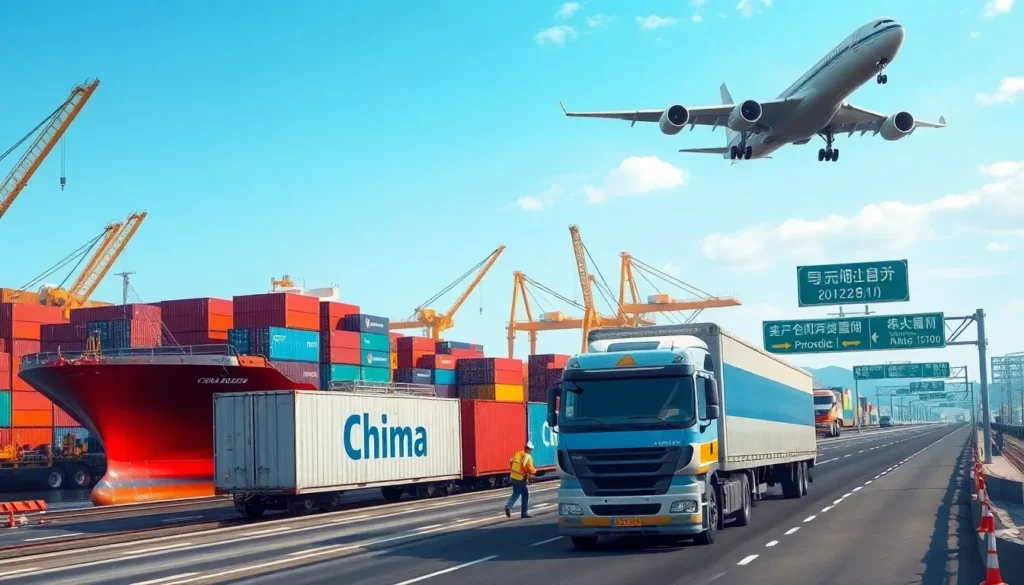Shipping from China to Russia in 2025 demands precision to keep your supply chain efficient and compliant. This guide equips you with clear insights to choose the best shipping methods, manage costs, and partner with reliable freight forwarders, ensuring your goods reach Russia safely and on time. With China-Russia trade hitting a record $244.8 billion in 2024, this corridor is vital yet complex. Let’s break down what you need to succeed.
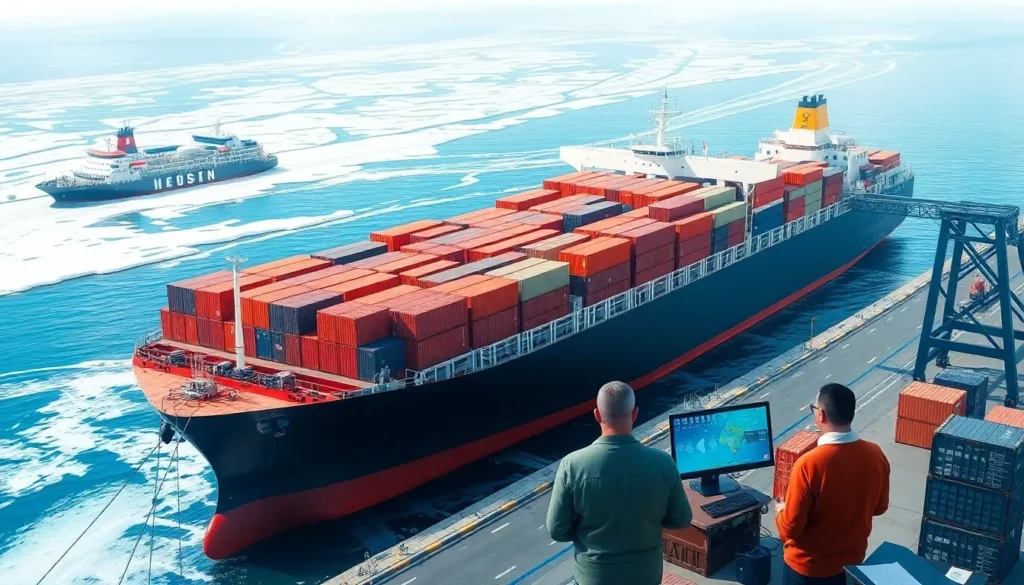
Navigating the 2025 China-Russia Logistics Landscape
Geopolitical and Economic Factors Shaping Your Shipments
The China-Russia trade route in 2025 is dynamic but challenging due to geopolitical shifts. Trade volumes have doubled since 2020, creating opportunities but also hurdles like sanctions and customs scrutiny. As a freight forwarding expert, I’ve seen businesses thrive by staying proactive about compliance and route planning.
- Sanctions Impact: Over 50% of Russia’s crude trading fleet faces U.S. sanctions, affecting carrier options and payment methods. Always verify suppliers and transactions against sanctioned entity lists to avoid delays.
- Trade Trends: Despite a 7.5% dip in early 2025 ($71.12 billion), Chinese exports like automobiles ($3.704 billion in 2024) remain strong. Align your sourcing with high-demand sectors like machinery or consumer goods.
- Northern Sea Route: This Arctic route, growing 50% in foreign vessel traffic, can cut transit times by up to 10 days compared to Suez Canal routes. Consider it for seasonal efficiency.
Key Takeaway: Monitor sanctions and leverage emerging routes like the Arctic to stay ahead of disruptions.
Freight Rates and Container Availability Challenges
Freight rates in 2025 are volatile, driven by global demand and container shortages. Ocean freight from Shanghai to Europe spiked to $6,000+ per container, impacting China-Russia routes. I recently advised a client to book early during peak seasons to secure space.
- Rate Drivers: Easing U.S.-China tariffs have boosted export demand, tightening container availability. Budget for fluctuating rates and prioritize early bookings.
- Capacity Constraints: Rail disruptions from Russian customs checks, especially for electronics, can delay shipments. Even shared rail containers face risks if they include restricted items.
Tip: Build a 10-15% cost buffer into your budget to handle rate spikes and delays.
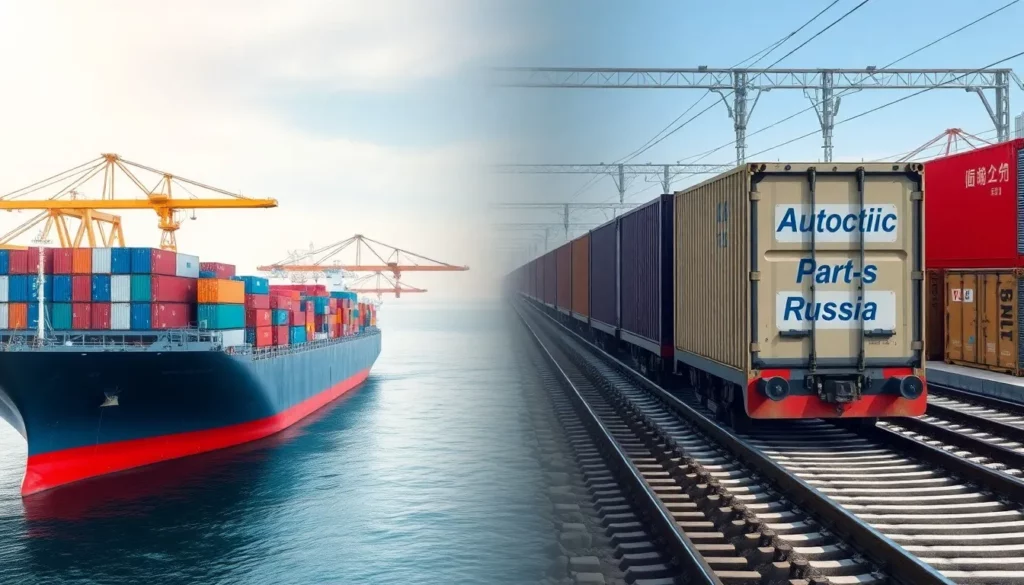
Choosing the Right Shipping Method for Your Needs
Sea Freight: Cost-Effective for Bulk Shipments
Sea freight is ideal for high-volume, non-urgent cargo, connecting Chinese ports like Shanghai to Russian hubs like Vladivostok or St. Petersburg. For example, a retailer importing furniture saved 30% by choosing sea freight for bulk shipments.
- Routes and Transit Times:
- Shanghai to Vladivostok: 5-10 days
- Western Russia (e.g., St. Petersburg): 25-35 days
- FCL: 15-35 days; LCL: Adds 3-5 days for consolidation
- Costs:
- 20-foot container to eastern Russia: $2,000-$3,500
- LCL: $80-$150 per cubic meter
- Additional fees: Port handling, customs, inland transport
- Best For: Bulk goods, machinery, consumer products like electronics or apparel
- Pro Tip: Choose FCL for predictable schedules and lower per-unit costs if you’re shipping over 15 cubic meters.
Warning: Align port selection with your final destination to minimize inland transport costs.
Rail Freight: Balancing Speed and Cost
Rail freight via the China-Europe Railway Express offers a middle ground, connecting cities like Chongqing to Moscow in 14-18 days. A client shipping automotive parts found rail halved transit times compared to sea freight.
- Key Routes:
- Yiwu to Ekaterinburg: 15-20 days
- Suzhou to Kazan: 16-22 days
- Transit Times:
- Standard: 11-18 days
- Express: As fast as 5 days for priority shipments
- Costs:
- 40-foot container to Moscow: $3,800-$4,800
- LCL: $60-$100 per cubic meter
- Best For: Medium-volume electronics, time-sensitive goods, e-commerce fulfillment
- Advantage: 50% faster than sea freight, cheaper than air.
Tip: Use rail for high-value goods needing faster delivery without air freight’s high costs.
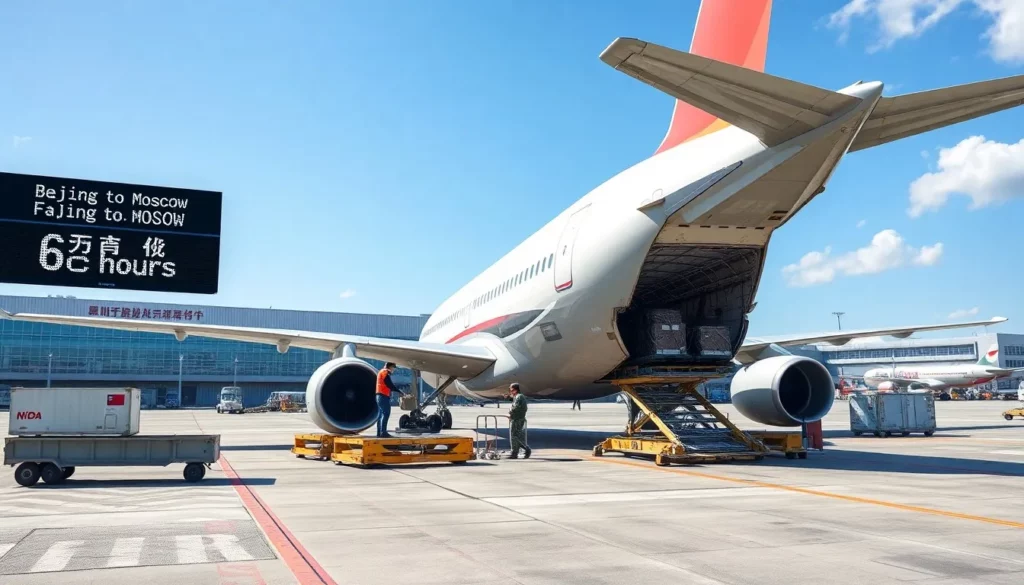
Air Freight: Speed for Urgent Shipments
Air freight is your go-to for high-value or time-critical cargo, with flights from Beijing to Moscow taking just 6 hours. A startup I worked with used air freight to rush prototypes, avoiding costly stockouts.
- Key Hubs: Shanghai, Shenzhen, Guangzhou to Moscow, St. Petersburg
- Transit Times:
- Standard: 5-9 days door-to-door
- Express: 3-7 days
- Costs: $4.50-$8.00 per kilogram; door-to-door: $4.00-$5.50
- Best For: Electronics, perishables, urgent parts, samples
- Consideration: Justifiable for shipments under 100 kilograms or high-priority deliveries.
Warning: Peak season demand can extend delivery by 1-2 days, so plan ahead.
Road Freight: Flexible for Oversized Cargo
Trucking suits oversized or urgent cargo, with routes like Tianjin to Russia via Mongolia. A construction firm I advised used road freight for machinery too large for rail containers.
- Routes: Tianjin through Zhangjiakou to Erenhot
- Transit Times: 10-18 days door-to-door
- Costs:
- Full Truckload: $8,000-$10,000 per 40-foot equivalent
- LTL: $130-$200 per cubic meter
- Best For: Oversized equipment, urgent deliveries to remote areas
- Advantage: Flexible scheduling and direct delivery.
Tip: Use road freight for locations lacking rail access or specific delivery windows.
Express Courier: Small, Urgent Shipments
Express couriers like EMS China Post are ideal for documents or small parcels, though major carriers like UPS and FedEx have suspended Russian services. A client used EMS for urgent contracts, ensuring 10-day delivery.
- Availability: EMS offers 10-15 day door-to-door service
- Costs: Starts at 130 yuan for 500 grams, plus 32 yuan per additional 500 grams
- Best For: Documents, samples, small urgent shipments under 10 kilograms
- Challenge: Limited carrier options due to sanctions.
Warning: Expect longer transit times than pre-2022 due to restrictions.

Mastering Russian Customs and Compliance
Essential Documentation for Smooth Clearance
Accurate documentation is critical to avoid Russian customs delays. I’ve seen shipments held up for weeks over minor invoice errors.
- Commercial Invoice: Include product descriptions, quantities, values, and HS codes.
- Packing List: Detail contents, weights, and dimensions per package.
- Transport Documents: Bills of Lading (sea), Air Waybills (air), or CMR (road) must match invoices exactly.
- Certificates: Origin or product-specific (e.g., TR TS) may be required.
Tip: Double-check documentation for consistency before shipment to prevent costly delays.
Navigating Russian Customs Processes
Russian customs can be complex, with duties averaging 30% of declared value or 4 EUR per kilogram. A broker’s expertise once saved a client from a $10,000 penalty due to incorrect duty calculations.
- Duty Calculations: Combine ad valorem and specific rates; personal effects under 5,000 EUR may be duty-free.
- Customs Brokers: Hire experienced brokers to manage declarations and payments.
- Delay Risks: Inconsistent documents or dual-use items (e.g., electronics) trigger inspections.
Best Practice: Use a licensed broker with Russian market experience to streamline clearance.
Staying Compliant with Sanctions
Sanctions add complexity, with expanded bans on dual-use goods like machinery. I advise clients to screen every transaction meticulously.
- HS Code Checks: Verify codes against Russia’s banned goods list (Directive No. 1374).
- Due Diligence: Screen suppliers, carriers, and banks against sanctioned entity lists.
- Payment Challenges: Alternative payment methods may be needed to comply with banking restrictions.
Warning: Provide clear civilian-use documentation for sensitive goods to avoid detentions.
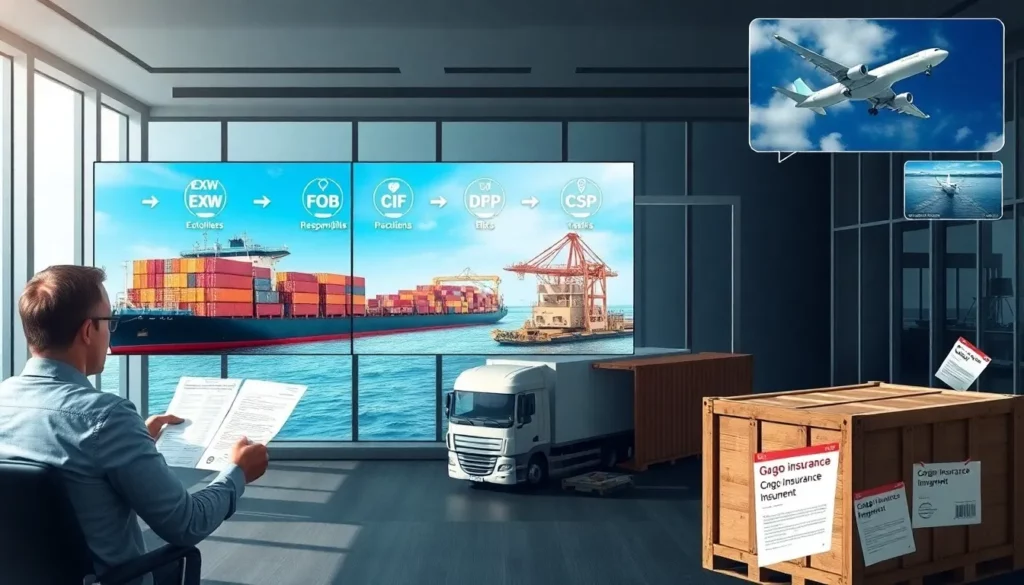
Structuring Your Shipping Process
Choosing the Right Incoterms
Incoterms define your responsibilities and risks. A client switching to DDP simplified their Russian imports significantly.
| Incoterm | Your Responsibility | Best For |
|---|---|---|
| EXW | All transport and export procedures | Experienced importers with strong logistics |
| FOB | From departure port onward | Control over carrier choice |
| CIF | From departure port, less control | Less recommended due to supplier control |
| DDP | Minimal; supplier handles customs and duties | New importers or those without local expertise |
Tip: Choose FOB for flexibility or DDP to reduce compliance risks.
Securing Comprehensive Cargo Insurance
Insurance protects against geopolitical and transit risks, with rates at 0.05-0.3% of declared value. A damaged machinery shipment was fully covered due to proper insurance.
- Coverage Types:
- Sea: General/particular average, total loss
- Air: Handling damage, weather delays
- Claims Process: Notify carriers immediately, provide photos and surveys.
Key Takeaway: Insure high-value or fragile goods to mitigate customs and transit risks.
Leveraging Tracking for Visibility
Real-time tracking enhances control, with GPS for road freight and container monitoring for sea. A client avoided a stockout by rerouting a delayed rail shipment using tracking data.
- Tracking Tools: Online platforms provide milestone updates.
- Benefits: Improve inventory planning and customer communication.
Tip: Use tracking data to predict delays and inform customers proactively.

Selecting a Trusted Freight Forwarder
Key Criteria for Your Logistics Partner
Choose a forwarder with deep China-Russia expertise. At AIIDII, we’ve resolved customs issues for clients by leveraging our local networks.
- Russian Market Experience: Look for forwarders with 10+ years handling Russian customs.
- Agent Networks: Ensure partners in Moscow, St. Petersburg, and regional hubs.
- Multimodal Options: Seamless air, sea, rail, and road coordination.
- References: Request case studies from similar B2B clients.
Best Practice: Verify forwarder licenses (e.g., IATA, NVOCC) and test communication responsiveness.
Due Diligence Checklist
- Licenses and Certifications: Confirm valid China and Russia freight licenses.
- Communication: Test response times and multilingual support.
- Quotes: Compare itemized vs. all-inclusive quotes for transparency.
Warning: Beware hidden fees like fuel surcharges or handling costs.

Your Step-by-Step Shipping Plan
Step 1: Pre-Shipment Planning
Coordinate with suppliers to ensure cargo readiness. A client avoided delays by confirming packaging compliance early.
- Verify dimensions, weights, and packaging for transport mode.
- Align production and pickup schedules, factoring in Chinese holidays.
- Ensure moisture-resistant (sea) or shock-resistant (rail) packaging.
Step 2: Requesting Quotes
Provide detailed cargo and destination info for accurate quotes. Itemized quotes helped a client save 15% by avoiding unnecessary services.
- Include HS codes, dimensions, and delivery timelines.
- Compare all-inclusive vs. itemized quotes for hidden fees.
Step 3: Booking and Documentation
Prepare accurate documents and confirm bookings. A single HS code error once delayed a client’s shipment by a week.
- Submit commercial invoices, packing lists, and certificates.
- Confirm service type, pickup, and special handling needs.
Step 4: Export Clearance from China
Your forwarder handles China’s export customs, typically 1-2 days. We’ve expedited clearance for clients by pre-submitting documents.
- Coordinate factory-to-port transport.
- Verify loading and documentation at pickup.
Step 5: Transit and Tracking
Monitor shipments with real-time tools. Tracking alerts allowed a client to reroute a delayed shipment, saving three days.
- Use forwarder platforms for milestone updates.
- Communicate proactively about delays.
Step 6: Russian Customs Clearance
Work with a broker to navigate Russian customs. A broker’s local knowledge cut clearance time for a client by two days.
- Submit declarations and pay duties accurately.
- Prepare for inspections of electronics or machinery.
Step 7: Final Delivery
Arrange last-mile delivery and confirm receipt. A client’s unloading equipment coordination ensured smooth delivery of oversized cargo.
- Schedule delivery based on consignee availability.
- Inspect cargo upon arrival for damage or shortages.
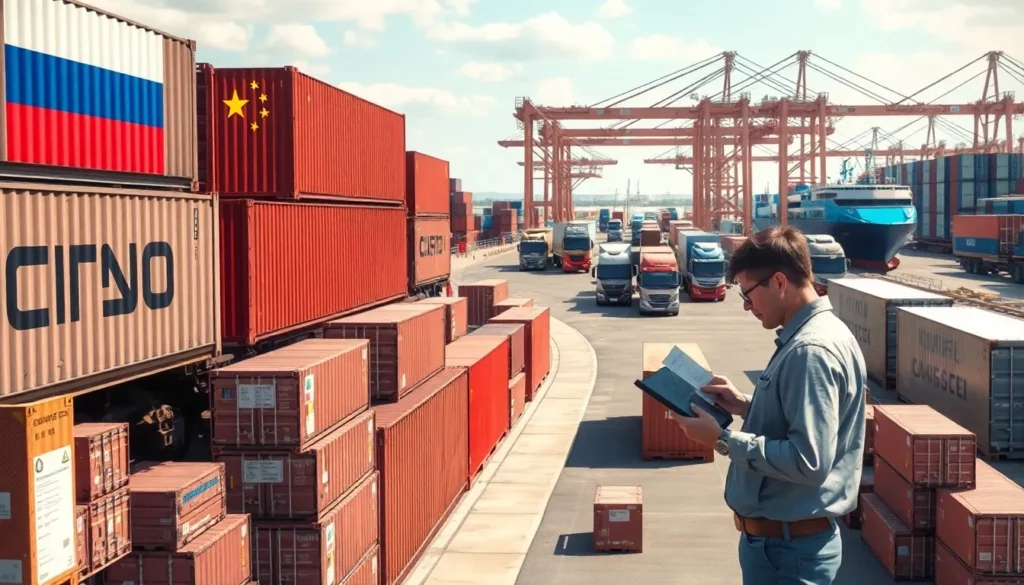
Conclusion:
- Compliance: Stay updated on sanctions and customs rules.
- Risk Management: Secure insurance and maintain multiple forwarder options.
- Performance: Monitor on-time delivery and cost efficiency.
Key Takeaway: Regularly review forwarder performance to optimize costs and reliability.
Consulting Experts for Tailored Solutions
Partner with experienced forwarders for strategic guidance. At AIIDII, we’ve helped importers adapt to sanctions with alternative routes.
- Seek forwarders with proven Russia expertise.
- Build long-term partnerships for better pricing and service.
FAQs
1. What causes most shipment delays at Russian customs?
Inconsistent documentation and dual-use item inspections, especially for electronics and machinery, are the top culprits.
2. How do sanctions affect payment methods?
Banking restrictions require screening for sanctioned entities; alternative payment methods may be needed.
3. Is door-to-door shipping reliable for all Russian regions?
Major cities have robust coverage, but remote areas may face delays or higher costs.
4. What insurance is essential for China-Russia routes?
Comprehensive coverage for war risks, disruptions, and customs delays, typically 0.05-0.3% of value.
5. How early should I book rail vs. sea freight?
Rail: 7-14 days; Sea: 14-21 days. Book earlier during peak seasons.
Final Tip: Partner with a forwarder like AIIDII to navigate sanctions, customs, and route challenges with confidence.

